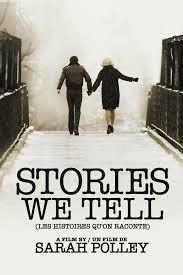Women's History and Awareness Month 2014:
WO/MEN IN NATURE AND NURTURE
Wednesday, February 26, 4:30PM, Charleston Carnegie Public Library
Living History Project Premiere Presentation
Refreshments to be offered at event
Friday, February 28, 7:30PM, Tarble Arts Center Atrium
Elaine Fine and John David Moore play a concert of violin and piano music written by women
Performance featuring music by Florence B. Price, Clara Kathleen Rogers, Emilie Mayer, and Amanda Maier.
Co-sponsored by the Tarble Arts Center
Monday, March 3, 5:30PM, Doudna Fine Arts Center Lecture Hall
Performance Poetry by Patricia Smith
followed by book signing
Tuesday, March 4, 11:30AM, Roberson Auditorium- Lumpkin Hall
Presentation by Barbara Baurer: "Smart Money, Smart Women"
Refreshments and prizes to be offered during event
Co-sponsored by Lumpkin College of Business, Literacy in Financial Education Center, and Women Exploring Business and Technology at EIU
Tuesday, March 4, 5:00PM, 1895 Room- MLK Jr. Union
Faculty Presentations:
"Gut Feelings: Exploring Gender and Emotions"
Format: TED-Style Ten Minute Talks
Refreshments to be offered during event
Saturday, March 15, 10:00AM, Tarble Arts Center Brainard Gallery
Global Threads: International Folk Art Textiles Opens
Exhibit to run through May 18, 2014
Co-sponsored by the Tarble Arts Center
Friday, March 28, 3:45PM, Location: To be announced
“Reconciling and Reuniting the Nation: How Americans
Have Remembered the Civil
War” with Caroline Janney PURDUE UNIVERSITY
Comment provided by Bonnie Laughlin-Schultz
Sponsored by History Department at EIU, Illinois State Historical Society, Booth Library, Coles County Historical Society, and Illinois State Genealogical
Society.
Monday, March 31, 5:00PM, 7th Street Underground- Martin Luther King, Jr. University Union
Women’s Studies Annual Awards Ceremony
Featuring a musical performance by Motherlode
Refreshments to be offered at event
Wednesday, March 26, 5:00PM, Lecture Hall- Doudna Fine Arts Center
KEYNOTE EVENT:
“The Last Walk: Caring for Our Animal Companions”
with Jessica Pierce UNIVERSITY OF COLORADO DENVER
Reception to follow event
Co-sponsored by Center for Humanities and UBoard
ADMISSION IS FREE FOR ALL EVENTS













